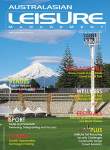Super Bowl LED lighting supplier enters Australian market

With Sunday night’s Super Bowl broadcast around the world from the USA, the lighting technology used to illuminate the Raymond James Stadium in the Florida city of Tampa is now available in Australia.
The game saw Tampa Bay Buccaneers win Super Bowl LV on their home ground, lit up by LED lighting from Sportsbeams that had been installed throughout the entire venue as part of a recent US$160 million upgrade.
The venue - which the Buccaners share with NCAA's South Florida Bulls - is one of just two stadiums worldwide fitted with Sportsbeams tuneable white and full RGB capable lights, with the technology prominently displayed throughout the NFL season.
The installation of more than 700 of Sportsbeams’ Chromabeams LED 900 fixtures has seen the Raymond James Stadium become a pioneer in the advanced sports lighting world, with every single fixture capable of instantly switching from white light to one of two million RGB colour options, through a quick and responsive digital command that can be controlled with a simple click of a button.

Delivering the least glare of any sports fixture available, Chromabeams use patented technology unprecedented in the sports lighting world. Housed in full aluminium die-cast body and single-optic tempered glass lens, these are one of the only lights in the entire industry that do not have any plastic in the light path or its housing. In addition, the Chromabeams LED 900 also has three levels of active and passive cooling and can deliver up to 85,000 lumens per fixture with intelligent power supply management and controls.
Sportsbeams’ Melbourne-based Chief Representative Australasia, Spencer Kassimir explains “our lights are planned for technology that will be arriving in 20 years. Think about TVs 20 years ago. Old, fat TV boxes with low resolution. We want to make sure our lights are ready for the next 20-plus years of innovations that nobody today could possibly dream of.”
The lighting can also reduce dead zones and blind spots with its symmetrical fixtures making them the strongest candidate in providing athletes, cameras and fans the best lit view of the ball no matter how high it may fly while still being dark sky compliant and more efficient, while boasting 10 times less flicker than the industry standard makes them more broadcast-friendly now and into the future than completing LED lighting on the market.
In addition to superior lighting for in-game action, Chromabeams fixtures leave the potential for one-of-a-kind, showstopping light shows drenched in millions of different colours, adding a visual experience for sports fans and concertgoers unlike any other.

Explaining how the company has developed, Sportsbeams co-founder, Kevin Baxter, who has won three Emmy awards for lighting, stated “this journey started almost two decades ago when we brought white LED lighting to the broadcast and motion picture industries in 2002. Eventually those lights were universally adopted by the sports broadcasters for their commentators and on-field interviews. The sports broadcasters then goaded me to make a stadium fixture with the same high quality LED light that our broadcast lights possessed.
“In 2014, during the halftime blackout in the New Orleans Super Bowl, Raymond James Stadium called us, before the lights came back on, and asked, ‘Do your lights come on immediately when power is restored?’ Of course our answer was ‘yes’. Within a few months we had replaced all of the egress lighting at Raymond James Stadium, and a few more every year since.”
With LED lighting gaining increasing acceptance in Australia and New Zealand over recent years, Kassimir is looking to work with local clients to make sure they get the most out of what the Sportsbeams can offer, commenting "I'm lookings forward to bids and tenders where we are given the opportunity to compete directly head to head with the competition based on the merit of the product - not only in elite facilities but also for community sport.”
Australasian venues including Sydney’s Bankwest Stadium and Perth’s Optus Stadium installed the technology as they were being constructed, while older venues such as Auckland’s Eden Park, the MCG and the Rod Laver Arena at Melbourne Park have replaced their old halide lamps with new LED lighting.
LED lighting is also in increasing demand in community sport - from outdoor settings to indoor facilities - offering higher light levels, flexibility of use and consuming less energy.
For more information go to www.sportsbeams.com.
Images: Sportsbeams lighting at the Raymond James Stadium, Florida, USA.
Related Articles
5th February 2021 - Lighting upgrades at Cairns’ Griffiths Park marks new home for cricket in Far North Queensland
4th January 2021 - Shoalhaven sportsfields continue to receive improved lighting
21st November 2020 - Northern Territory’s $4.8 million Urban Oval Lighting Upgrades Project completed
6th November 2020 - AREALUX becomes AAA-LUX Australia making it a full member of the AAA-LUX lighting organisation
30th September 2020 - City of Sydney installs sustainable LED lighting across aquatic and community facilities
23rd September 2020 - New field lighting installed at Armidale’s Harris Park sportsground
5th May 2020 - Lighting upgrades commence at Sydney Motorsport Park
1st April 2020 - Gerard Lighting Group completes sale of infrastructure division to Schréder
10th March 2020 - Lighting improving project at Sunshine Coast Stadium approaches completion
8th November 2019 - Jasstech highlights history of LED sport lighting innovations and installation durability
20th September 2019 - GLG releases cloud-based sports field lighting control solution
27th March 2019 - State-of-the-art lighting installed at popular Newcastle football field
11th February 2019 - Smart sensor enabled LED lighting installed in City of Darwin Bicentennial Park
10th August 2018 - LED innovations set to grow global stadium lighting market to a value of US$622.2 million by 2023
2nd February 2018 - Philips Lighting illuminates PyeongChang Winter Olympics venues
8th February 2018 - The smart strategy behind Tourism Australia’s ‘Croc Dundee’ Super Bowl pitch to the Americans
